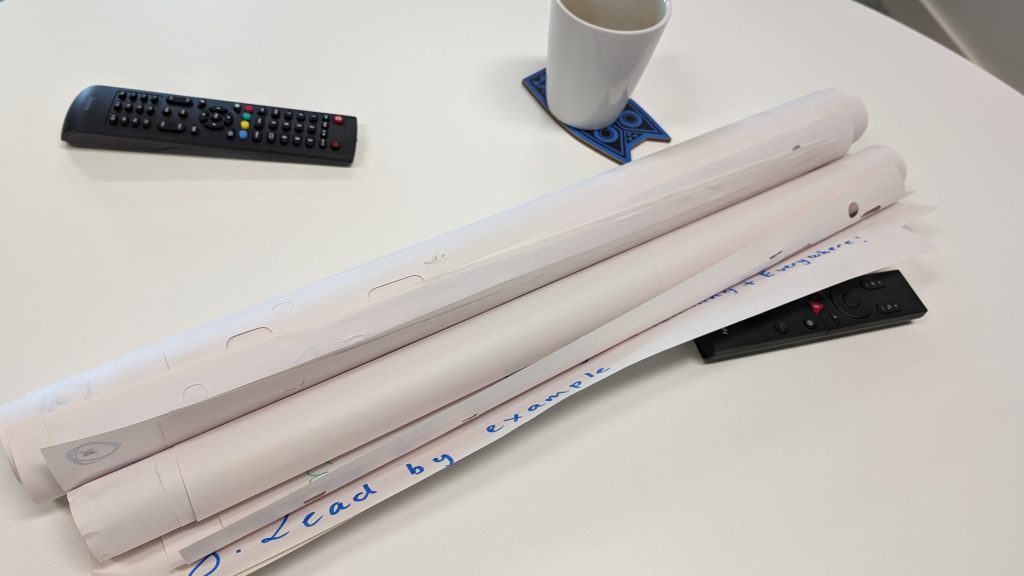Oh god. I’m so boring. Here’s another footballing reference on this website. I’m really going to have to find another interest. But I’m in my late 40s so I’m too set in my ways. Anyway, this is a quote from the Denmark head coach Kasper Hjulmand when he moved into that role and was setting the national team’s agenda. He was talking about the importance of deciding what the team stands for and the principles it adheres to when trying to move it forward.
I read this in an article on team building theories in the Euros, and it struck me as highly pertinent since I’m going through something similar at the moment. Albeit with fewer Danes. The exciting thing about taking on a new post like I have just done (there was no Vice-President Students & Learning previously) is that to an extent, you are working with a blank slate. Which is fine until you have to fill in that slate. A number of excellent services, units and centres have been brought together under our Students & Learning umbrella, but how do we get everyone working together smoothly and effectively in this new formation.
So last week, I brought together my entire team to discuss just that. How can we organise ourselves within our new Office for Students & Learning so that the Student Journey is running through everything we do. We started by discussing the wider institutional strategic plan in some detail, but then we began to explore important questions – Who are we? How do we want to work? What is important to us? What should we be doing more or less of? I keep using the phrase ‘Every contact leaves a trace’, which forensic fans will recognise as Locard’s Principle. So for example, if you put your hands on your desk, you’ll leave trace remnants behind. It’s gross. You’re gross. But it’s the cornerstone of forensic method and practice. I like this analogy for the student journey. Every encounter one of our students has with any part of the university, will leave an impression on them, on their attitude, sense of self-worth and confidence, and so on and so on. How can we ensure that the traces left behind are positive and constructive ones. Not a question I can answer now, but one our team is already thinking through.

An what a fantastic morning it was. Loads of discussions and ideas were flying about. Lots of suggestions. I’ve now got over 20 flipchart sheets, a million post-it notes, and a Mentimeter download to go through to pull together something that makes sense and reflects our collective view of what the new Office for Students & Learning will look like, what is important to us and how we are framed around the Student Journey. And there will be some big ideas coming out of this.
Personally, I do tend to like taking big swings. If there’s an issue that you think needs addressing, sometimes it’s not enough to just tickle a bit around the edges. You need to be brave enough to make big changes. Although saying this, a previous boss of mine told me more than once that “You can’t blow everything up all at once” in order to fix things. Which is clearly nonsense. I point you to the documentary ‘Star Wars’ in which the outcome of blowing literally everything up fixed all the problems. Well, until they had to blow it all up again two films later. And then again. And at least once more. But it’s fixed now, I’m sure. I’ve recently watched The Fall Guy and at the end, guess what, everything blew up and the problem was fixed. So if I’ve learned anything from Hollywood – and I used to be a movie reviewer on student radio, so to quote Daddy Pig, I’m a bit of an expert – blowing everything up fixes just about every problem. And remember, when has Hollywood ever gotten things very very wrong. Still, the takeaway is that blowing everything up can work. Also that the best way to master a skill is through a musical montage sequence, and if you take your glasses off people tell you you’re beautiful. But this latter example has never happened to me in all the many times I’ve taken my glasses off, so I’m beginning to question its veracity. In fact, I’m now questioning everything I’ve just said.
I’ve been reminded of taking big swings for the benefit of our students a little this week, when a colleague pointed me in the direction of a fab interview with Richard K. Miller, president emeritus of Olin College of Engineering, on the The Key with Inside Higher Ed podcast. The interview focused on ways in which universities can support the development of long-term student wellbeing, extending far beyond graduation. I’ve been to Olin myself, and found it an inspiring experience. Indeed, it was one of those moment that helped solidify my own view of what HE should and could be. This was back when I was grappling with a poorly performing Foundation Year when I was in the faculty of Science, Engineering & Design. The trip helped me think through how to move from a deficit model to one that focused on transition into higher education, and it inspired my to introduce exciting new modules including massive project models which brought together all science and engineering students to work collaboratively to address multidiscipline global challenges. We also removed graded assessments from the first semester, because to be honest, what were they trying to achieve? Attendance and progression improved. But also, our staff were more excited about teaching on those modules.
But not everything needs to be big and flashy. For us here and now, I can see from the notes from last week that improving communication, supporting collaboration and combining expertise are important first steps. Along with more proactive working with our students. There’s much to digest, but I’m confident that once we’ve worked through it all, we’ll know who we are, what we’re about and how we want to work with and for our students here at Maynooth.
